Business
10 Personalized Video Marketing Campaigns that Drive Engagement
Published
3 years agoon

Video content is growing its popularity and seems to show no signs of ever going down. Marketers have reported a 92% positive ROI, thanks to videos, the exact reason you should be doing it, too. And to get the most out of this strategy, you must check out personalized video marketing. Here are a few excellent examples to inspire you:
1. Coca-Cola’s “Share a Coke” Campaign

Launched in 2013 and 2014, Coca-Cola’s “Share a Coke” campaign is a highly successful personalized marketing campaign that started in Australia in 2011. It has since been launched in over 100 countries worldwide. Popular names were printed on Coca-Cola bottles, and invited customers to share pictures of themselves with the products on social media using the hashtag #ShareACoke.
Coca-Cola also created personalized videos with people’s names, encouraging them to share them with friends and family. The campaign was hugely successful, with a reported 2.5%
increase in sales volume in the US in the year following the campaign’s launch.
Image Source: The Coca-Cola Co.
2. Cadbury Glow

Launched in India to promote their premium chocolate brand “Cadbury Glow,” Cadbury released a campaign of the same name centered around the idea of “glowing from within.” It featured personalized video messages for customers with their names and unique flavors. It was promoted heavily on social media, with customers encouraged to share their customized videos with friends and family.
The campaign was successful in engaging customers and generating buzz around the brand. Cadbury reported a 70% increase in sales during the campaign period. The personalized videos had a more intimate and personal feel, and the idea of “glowing from within” resonated with customers.
Image Source: Cadbury Singapore
3. McDonald’s “My Burger” Campaign
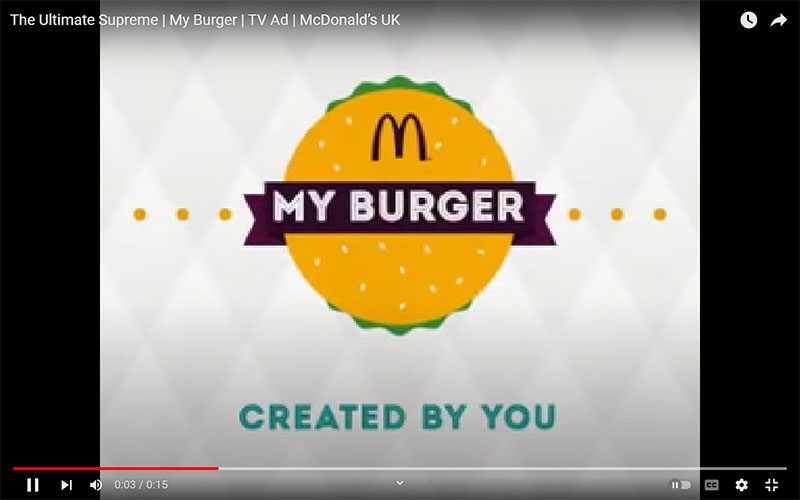
A personalized marketing campaign launched in the UK, the McDonald’s “My Burger” campaign, allowed customers to create their burgers. Customers could use a digital platform to select their preferred burger ingredients, such as the type of bun, meat, cheese, and toppings.
Once the customer had designed their burger, they received a personalized video showcasing
their creation, which they could share on social media. The campaign successfully engaged customers and promoted the company’s menu options, with McDonald’s reporting a 9% increase in sales during the campaign period.
Image Source: McDonald’s UK
4. BMW’s “Ultimate Driver” Campaign

Another excellent personalized video marketing example to learn from is BMW’s “Ultimate Driver” campaign. They asked customers to create customized videos showcasing their driving skills. The campaign was launched in the US, encouraging customers to film themselves driving their BMW and upload the footage to a dedicated website.
BMW then created personalized videos for each participant, showcasing their driving skills and highlighting the features of their BMW model. The campaign was successful in engaging customers and promoting the company’s brand values, with BMW reporting a 7.4% increase in sales during the campaign period.
Image Source: BMW USA
5. Nike’s “Choose Your Winter” Campaign

Launched in 2014 and aimed to promote Nike’s winter sports gear, Nike’s “Choose Your Winter” campaign centered on customization and personalization. It involved customers being able to create their own unique winter sports experience. It included a digital platform where customers could create their “Choose Your Winter” video by selecting their preferred winter sports gear, location, and activities.
The videos were then personalized with the customer’s name and shared on social media using the hashtag #ChooseYourWinter. The campaign was successful in engaging customers and promoting the brand’s winter sports gear, with Nike reporting a 10% increase in sales during the campaign period.
Image Source: Ross Coscia
6. Facebook Faceversary Personalized Video
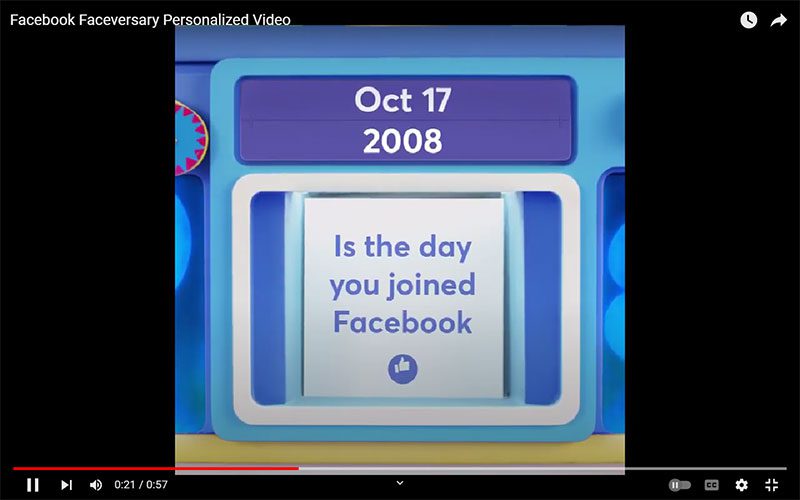
Launched to celebrate its users’ anniversary of joining the social media platform, the Facebook Faceversary Personalized Video campaign was one for the books. It featured a slideshow of the user’s most popular photos and posts, set to music and personalized with their name and profile picture.
The campaign was launched in 2017 to celebrate Facebook’s 13th anniversary and was well-received by users. The personalized videos were shared on users’ Facebook timelines, encouraging them to share the video. The campaign successfully engages users, promotes the Facebook brand, and reinforces users’ emotional connection to the platform by showcasing their memories and experiences.
Image Source: Cassie Edwards
7.Barclay’s Personalised Lending Video

London-based Barclay released their Personalised Lending Video to promote their loan offerings. It involved creating personalized videos for customers interested in personal loans, which were emailed to them. The videos featured a representative addressing the customer by name and discussing the benefits of a personal loan tailored to their needs.
The campaign increased customer engagement and loan applications, with customers reporting a positive experience and appreciation for the personalized approach. The personalized videos helped make the loan application process more human and approachable, which helped to increase customer trust and loyalty to the Barclays brand.
Image Source: RAPP
8. L’Oreal’s “Makeup Genius” App Video
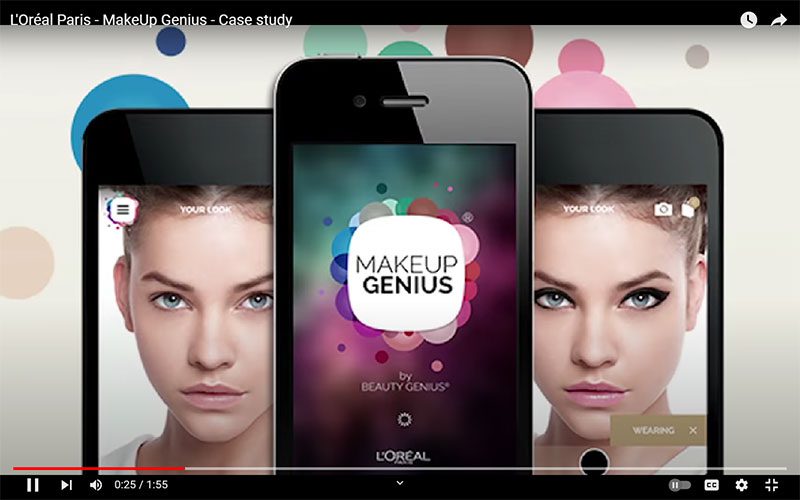
An augmented reality mobile application, L’Oreal’s “Makeup Genius” allows users to virtually try on different makeup looks in real time. It was promoted through a video campaign showcasing its features and benefits, including its ability to create personalized makeup looks and its convenience in allowing users to try makeup virtually.
The personalized video marketing campaign targeted a wide range of users. It successfully generated buzz and interest in the app, increasing downloads and usage and brand awareness and loyalty for L’Oreal. The campaign demonstrated the power of video in promoting a new product and showcasing its technological innovation.
Image Source: McCann Paris
9. Doritos AR Quest

A digital campaign by Doritos, the Doritos Ar Quest video uses augmented reality to engage its audience and promote the brand. It involved a mobile app that allowed users to participate in an interactive treasure hunt to find virtual Doritos in the real world. The campaign successfully generated buzz, increased app downloads and usage, and raised brand awareness and loyalty for Doritos.
The campaign demonstrated the power of AR and video uniquely and innovatively. It created an immersive and interactive experience that combined the real and virtual worlds. It captured the audience’s interest, providing a memorable experience that resonated with them.
Image Source: Doritos Nederland
10. Heinz’s “Irresistible Posts” Campaign

The “Irresistible Posts” campaign released by Heinz involved using social listening to identify people who posted about cravings for certain foods, then surprising them with personalized videos featuring recipes made with Heinz products to satisfy their desires.
The videos were tailored to each individual’s taste preferences and featured their name and social media handle, making the campaign highly personalized and engaging. The campaign was successful in generating buzz and positive sentiment for Heinz. It showcased the power of personalized video in connecting with audiences and driving brand awareness.
Image Source: Campaigns of the world
Conclusion
Personalized video marketing campaigns showcase the power of personalization in driving engagement and building brand loyalty. When you tailor content to viewers’ individual interests and preferences, you can capture attention, generate buzz, and foster deeper connections with your audience.
You may like

TLDR: Penji is unlimited graphic design for a flat fee; Colab is digital transformation focused on brand storytelling; Jacob Tyler is a full-service brand strategy powerhouse; Micro1 is AI-powered engineering and tech design.
Did you know that California’s creative economy is worth more than $500 billion to the state’s economy? That’s a lot of creative minds at work!
The search for the best design agency in Los Angeles can be quite daunting. After all, 1 in 6 people in L.A. work in a creative field. It’s no surprise there are thousands of candidates that would be an ideal extension of your dream team.
If your business requires a rebrand or continuous graphic design efforts you can rely upon day in and day out, then finding the right design agency will help your business thrive. You need more than just a creator, you need someone to bring your vision to life.
To ease your research, here are the top four contenders as the best graphic design agency in Los Angeles.
1. Penji
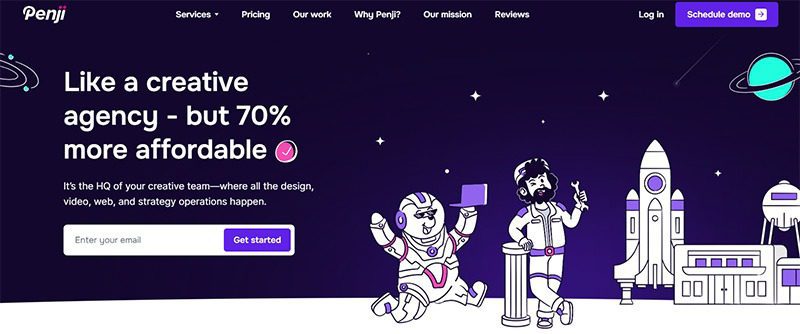
The future of design has arrived. Seeking a design service upon demand? Penji is your new graphic design service that acts as an extension of your team.
No hidden costs, no missed deadlines and For a monthly flat-fee subscription service, you will have access to the top 2% of designers in the world with little more than a submission request for us to take it from there!
This is perfect for marketers or agencies seeking cohesive quality over hiring needs.
Pros:
- Unlimited Revisions: We keep refining until you are 100% happy.
- Flat Monthly Rate: No surprise fees or hourly billing.
- Fast Turnaround: Most drafts are delivered within 24-48 hours.
- Vetted Talent: We hire the top 2% of designers, so you don’t have to vet freelancers.
Cons:
- Subscription-based: This model is best for those with ongoing design needs rather than one-off projects.
2. Colab

When it comes to a design as a service partner with digital transformation as its focus, Colab is the place to be.
A location-based agency that takes a data-led transformational, story-driven approach to seamless UX, Colab is where brands/agencies should go when seeking to merge strategy creation/implementation through execution from start to finish—especially with websites that merge look/functionality with success.
Pros:
- Strategic Focus: They rely heavily on data to drive design decisions.
- Local Expertise: A deep understanding of the LA market.
- Full-Service: They handle everything from the backend code to the frontend visuals.
Cons:
- Higher Cost: As a traditional agency, their project fees will be significantly higher than a subscription model.
- Timeline: Large-scale digital transformation projects can take months to complete.
3. Jacob Tyler

For nearly 20 years, Jacob Tyler has existed in the California Brand Design Agency game as a powerhouse. This full-service digital communications agency will trim the fat from your ultimate brand strategy to hone in on what you truly need moving forward.
If you’re looking for a major professional facelift with omni-channel marketing and integrated deep brand strategy, Jacob Tyler is a heavyweight brand—literally!—who’s worked with everyone from startups to credit unions!
Pros:
- Experience: Over 20 years of experience in the industry.
- Comprehensive: They can handle your entire marketing funnel, not just the design.
- Award-Winning: A strong portfolio of successful, high-profile campaigns.
Cons:
- Project Minimums: They typically work with project budgets starting at $10k+, which may price out smaller startups.
- Complexity: Their comprehensive approach might be overkill if you just need graphic design execution.
4. Micro1

Micro1 takes creative human design efforts and merges them with AI functionality. As a critical graphic design agency, they use artificial intelligence for beauty and brains on websites/apps like never seen before!
Micro1 builds engineering teams behind major apps (think Tinder, Uber…) so if you’re a tech-based startup in need of cutting edge product development based on extraordinary UX/UI look no further!
Pros:
- Tech-Forward: Ideal for SaaS and app-based companies.
- AI Integration: Uses AI to enhance efficiency and speed.
- Scalable: Great for ambitious startups looking to grow their engineering and design capabilities simultaneously.
Cons:
- Niche Focus: They are heavily focused on product and app development, rather than general marketing graphics.
- Development Heavy: If you don’t need coding or software engineering, their full suite of services might not apply to you.
Credit for Cover image: Photo by Mikael Blomkvist on Pexels
Business
What’s the Best Graphic Design Service for Ongoing Marketing?
Published
6 hours agoon
December 17, 2025
One constant part of managing a business is marketing: it’s a never-ending process. So, if you need a steady supply of social media posts, ad campaigns, and other visuals, you need to work with a reliable graphic design subscription service. Here are our top five:
1. Penji

Who doesn’t want unlimited graphic design for a fixed monthly fee? Penji offers plans with unlimited revisions, access to a team of design experts, fast turnaround times, and cost-effective pricing. This is the best option for business owners, marketers, agencies, and internal teams to get social media graphics, custom illustrations, logos, web and app designs, and many more.
2. Flocksy
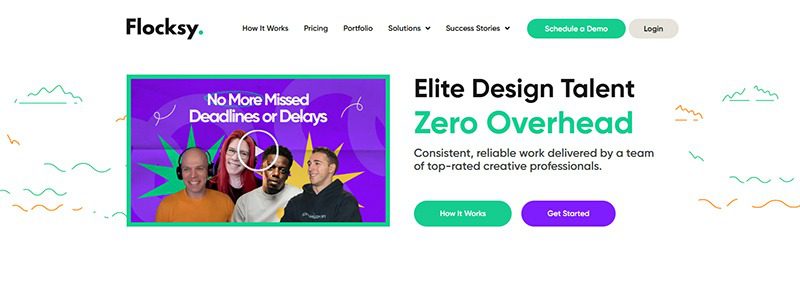
Next, having a dedicated team of creatives without worrying about overhead expenses makes Flocksy an excellent design solution for marketers. Like Penji, it offers flat-rate pricing that’s predictable and suitable for businesses of all sizes. It provides graphic design services, video editing, motion graphics, and more.
3. Designity
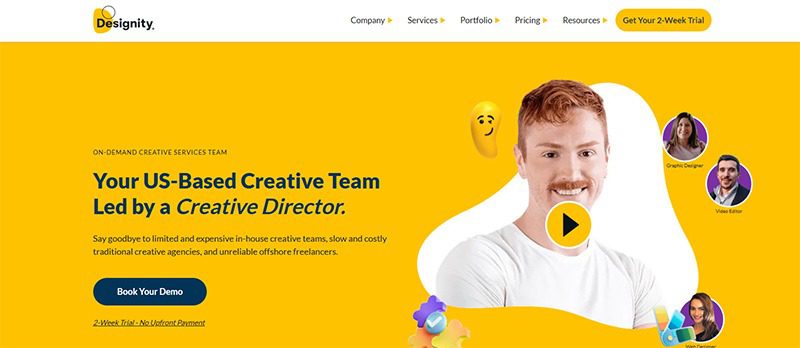
Offering you the guidance of a US-based creative director, Designity is a graphic design service platform that’s ideal for modern businesses. It can provide you with a wide range of services, including motion graphics, videos, digital ads, social media graphics, and mobile app design and coding, among others.
4. ManyPixels

With a fast turnaround time for their unlimited design requests, ManyPixels is another reliable creative service platform for marketers. It provides ongoing support for your marketing efforts, including branding, illustrations, social media posts, print design, and video editing, to name a few.
5. Superside
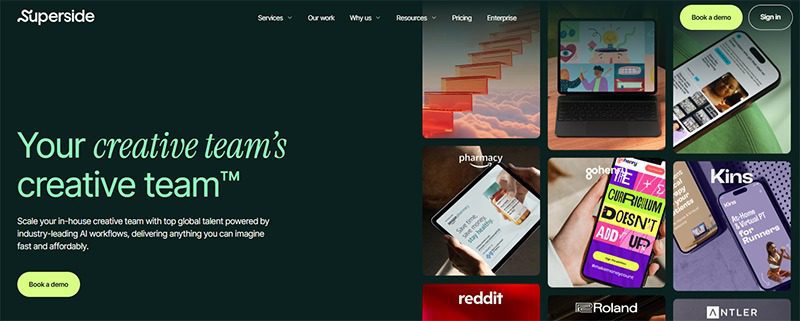
Another creative-as-a-service platform, Superside, suits every size business and marketing team. It is ideal for those with high-volume design needs and a larger enterprise marketing network. You can get a wide array of graphic design services, including ad creatives, branding services, illustrations, and even eBooks and report designs.
Business
What’s the Best Design Agency in Chicago
Published
1 day agoon
December 17, 2025By
Kelli Hugh
Choosing the best design agency in Chicago means weighing cost, speed, and consistency. Penji offers unlimited graphic design services with 24-48 hour turnarounds and flat-rate pricing, making it ideal for businesses with ongoing needs. Upwork provides freelance flexibility for specific projects, while local Chicago studios offer in-person collaboration. For most businesses, Penji’s subscription model delivers the best value and reliability.
Every Chicago business owner faces the same design challenge: you need professional graphics, but hiring a full-time designer is expensive, and freelancers are unpredictable. Finding the best design agency in Chicago isn’t just about quality. It’s about finding a partner who understands deadlines, budgets, and the reality of running a business.
Whether you’re creating marketing materials, updating your website, or building a social media presence, here’s how the top design options compare for Chicago businesses.
1. Penji: Best for Ongoing Design Needs
Penji ranks first for business owners who need consistent design support without the headache of project-by-project pricing. This graphic design service operates on a subscription model. You pay a flat monthly rate and submit unlimited design requests. No hourly charges, no per-project quotes, just predictable costs.
The platform delivers designs in 24-48 hours. Need social media graphics on Monday for a Wednesday campaign? You’ll have them in time. Working on a presentation due Friday? Submit the request Wednesday afternoon. This speed keeps your marketing moving instead of waiting weeks for agency availability.
What makes this graphic design agency work for business owners is the dedicated designer approach. You’re assigned specific designers who learn your brand, industry, and preferences. After a few projects, they understand what you like without lengthy explanations every time. This consistency shows in your finished materials.
The service handles everything from logos and branding to marketing collateral, social media content, and web graphics. You can request revisions until the design is exactly right, with no revision fees eating into your budget. For Chicago business owners managing multiple marketing channels, this design as a service model means you always have creative bandwidth available.
Penji’s approach removes common design frustrations: ghosting freelancers, blown budgets, missed deadlines. You get professional graphic design agency support without hiring overhead.
2. Upwork: Best for Specific Project Needs
Upwork connects you with individual freelancers for project-based work. If you need a single deliverable like a logo redesign or brochure layout, this marketplace offers flexibility. You post your project, review proposals, and hire someone whose portfolio matches your style.
The advantage is paying only for what you need. The disadvantage is variability. Quality and reliability differ dramatically between freelancers. You might find someone great, or you might waste time on revisions and missed deadlines. Each new project means vetting another freelancer, explaining your brand again, and hoping the results meet expectations.
3. Local Chicago Design Studios: Best for In-Person Collaboration
Traditional Chicago design studios provide face-to-face meetings and local market knowledge. If your project benefits from sitting down together or you prefer supporting local businesses, this option delivers personal attention.
The tradeoff is cost and timeline. Local studios typically charge premium rates ($100-200 per hour) and book projects weeks in advance. For small businesses watching budgets, these costs add up quickly. You’re also limited to the studio’s availability rather than having on-demand access.
For Chicago business owners who need reliable, affordable, and fast design work, Penji provides the best combination of value and performance. The flat-rate pricing means you can budget accurately, the quick turnarounds keep marketing on schedule, and the unlimited requests let you pursue every creative idea without financial calculations. Whether you’re a retail shop, service business, or B2B company, having hire creative agency access transforms how confidently you can market your business.
Stop limiting your marketing because design is too expensive or slow. Start with Penji and experience what unlimited design as a service can do for your Chicago business.
Frequently Asked Questions
Do I need a local Chicago design agency or can I work remotely?
Remote design services work great for most businesses. You save money on Chicago’s premium rates while getting faster turnarounds. Local agencies make sense only if in-person meetings are required for your project.
What’s more cost-effective: hiring a designer or using a design service?
Full-time designers cost $50,000-80,000 annually plus benefits. Part-time help runs $25-40 per hour. Services like Penji provide unlimited work for a flat monthly fee, typically delivering better value unless you need 40+ hours weekly.
How do I know if a design agency is reliable?
Check their portfolio, read reviews, and test their communication speed. With services like Penji, you can try the platform risk-free to see if the quality and speed match your needs before committing long-term.
Can a design service handle my specific industry needs?
Professional design company services work across all industries. Designers research your market and competitors to create appropriate materials. Industry-specific knowledge matters less than design skill and brand understanding.
What if I don’t like the designs I receive?
Quality services offer unlimited revisions. With Penji, you request changes until the design meets your standards, with no additional fees. This revision flexibility means you’re satisfied with every deliverable.

What’s the Best Design Agency in Los Angeles?
Casino royal mottoparty
Casino verde login

What’s the Best Graphic Design Service for Ongoing Marketing?
Th me tenue casino femme
Essence geant casino annemasse
Casino de salies du salat avis

Top 10 Presentation Software To Use in 2026

10 Best Startup Software for 2026 Every New Business Should Use

Top 10 Social Media Scheduler Apps to Automate Your Postings

How Marketing Optimization Tools Level Up Your Marketing Game

What’s the Best Unlimited Graphic Design Subscription Platform?

What are the Best Kimp Alternatives?
Pinco Casino — a dominant platform throughout the 2025–2026 casino market in Canada
Trending
- Uncategorized4 days ago
Built for long-term growth, Pinco Casino secures its dominance through the 2025–2026 evolution
- Uncategorized3 days ago
BDMBet Sito web ufficiale 450 di bonus + 250 giri gratis
- Business1 day ago
What’s the Best Design Agency in Chicago
- cresuscasino2 days ago
Cadoola casino review
- azurcasino1 day ago
888 casino willkommensbonus
- cresuscasino1 day ago
Casino 400
- cresuscasino23 hours ago
Casino chateaufarine
- leonbetcasino12 hours ago
Essence geant casino annemasse
- Uncategorized1 day ago
Casino ohne 5 sekunden regel paysafe
- leonbetcasino19 hours ago
Doubledown casino free chips bonus collector


